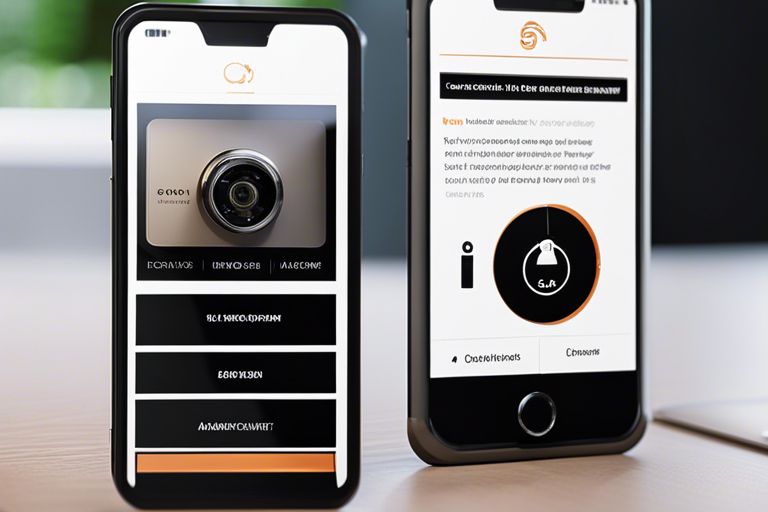Understanding the return on investment (ROI) of secure development practices is crucial for organisations looking to enhance their cybersecurity efforts. In this guide, we will research into the process of measuring the ROI of secure development, providing valuable insights for assessing the effectiveness of security investments. By following these steps, you can quantify the impact of your secure development initiatives and make informed decisions to strengthen your overall security posture.
Key Takeaways:
- Understand the Importance of Secure Development: Recognise the significance of integrating security into the software development process for long-term benefits.
- Define Measurable Security Goals: Clearly outline specific security objectives that can be quantified to measure ROI accurately.
- Implement Security Metrics: Utilise key performance indicators (KPIs) and metrics to monitor the effectiveness of secure development practices.
- Track and Analyse Security ROI Over Time: Continuously assess and analyse the return on investment of secure development initiatives to adjust strategies accordingly.
- Communicate Results to Stakeholders: Effectively communicate the impact of secure development ROI to stakeholders to ensure support and investment in future security initiatives.
Understanding the Basics of ROI in Secure Development
Defining ROI in the Context of Security
Return on investment (ROI) in the context of security development measures the effectiveness of the resources invested in security against the benefits gained in terms of risk reduction and value protection. It helps organisations understand the value they are obtaining from their security initiatives and assists in making informed decisions regarding future investments.
The Relevance of Security Investments
Security investments are crucial for organisations as they help in mitigating risks, protecting sensitive data, and maintaining customer trust. By investing in security measures, organisations can reduce the likelihood of costly data breaches, regulatory fines, and reputational damage. It is vital to view security investments as a strategic necessity rather than a discretionary expense.
Investing in security measures is not just a matter of compliance but also a means of safeguarding the organisation’s assets and reputation. By prioritising security, organisations demonstrate their commitment to protecting not only their own interests but also those of their stakeholders, including customers, partners, and employees. Effective security investments can result in long-term benefits that far outweigh the initial costs incurred.
How to Measure Secure Development ROI
Identifying the Costs: Investments in Secure Development
Regarding measuring the return on investment (ROI) of secure development practices, the first step is to identify the costs involved in implementing and maintaining these measures. This includes investments in tools, training, personnel, and any other resources required to ensure the security of your software development process. By understanding these costs upfront, organisations can better evaluate the benefits and overall value of their secure development initiatives.
Calculating the Benefits: Avoided Losses and Efficiency Gains
Measuring the benefits of secure development goes beyond just the financial aspect. It involves quantifying the value of avoided losses due to security incidents and the efficiency gains from having secure processes in place. By calculating the potential cost of a data breach or a software vulnerability, organisations can see the tangible impact that secure development practices have on their bottom line. Additionally, efficiency gains such as reduced time spent on fixing security issues or improved software quality can further demonstrate the value of investing in secure development.
Factors Impacting Secure Development ROI
As far as measuring the Return on Investment (ROI) of secure development practices, there are several key factors that can significantly impact the outcome. These factors are crucial to consider in order to ensure an accurate assessment of the effectiveness of your security efforts. Some of the main factors include:
- Initial investment in security tools and training
- Level of integration of security in the development process
- Quality and effectiveness of security testing
Perceiving the interplay of these factors is vital in determining the true ROI of secure development practices within your organisation.
Tips for Accurate Measurement
Measurement of ROI in secure development can be a complex process, but there are some key tips to ensure accurate evaluation:
- Set clear and measurable security goals from the outset
- Regularly track and monitor security metrics
After implementing these tips, you will be better equipped to assess the true value of secure development practices within your organisation.
Common Pitfalls and How to Avoid Them
One common pitfall in measuring secure development ROI is the tendency to focus solely on upfront costs without considering long-term benefits. To avoid this, it is vital to take a holistic view of the security process and consider the impact of security investments over time.
Improving Secure Development ROI
Best Practices for Maximizing Security Investments
In terms of maximising your security investments, it is crucial to focus on implementing a range of best practices. This includes conducting regular security assessments, investing in training for developers, and prioritising security from the initial stages of development. By proactively addressing security concerns, you can minimise the potential risks and vulnerabilities in your software.
Continuous Improvement and ROI Optimization
To achieve continuous improvement and optimise your ROI in secure development, it is imperative to adopt a mindset of ongoing enhancement. This involves monitoring the effectiveness of security measures, gathering feedback from stakeholders, and staying informed about new trends and threats in the cybersecurity landscape. By continuously refining your processes and investments, you can ensure that your security efforts align with the evolving needs of your organisation.
Conclusion: Measuring Secure Development ROI
Measuring the return on investment (ROI) of secure development practices is crucial for organisations to justify the resources allocated to cybersecurity. By utilising metrics such as reduction in security incidents, time saved on fixing vulnerabilities, and improved customer trust, businesses can quantify the impact of investing in secure development. Understanding the ROI of secure coding practices not only helps in budget allocation but also improves the overall security posture of the organisation. It’s vital for businesses to adopt a proactive approach towards measuring the ROI of secure development to ensure they are making informed decisions that enhance their cybersecurity efforts.
FAQ
Q: What is Secure Development ROI?
A: Secure Development ROI stands for Return on Investment in Secure Development. It is a measure of the financial benefit gained from investing in secure software development practices.
Q: Why is measuring Secure Development ROI important?
A: Measuring Secure Development ROI is important as it helps organisations understand the impact of their investments in security measures, allowing them to make informed decisions on future investments.
Q: How can Secure Development ROI be calculated?
A: Secure Development ROI can be calculated by comparing the costs of implementing secure development practices with the financial benefits gained from reductions in security incidents, data breaches, and potential financial losses.
Q: What are some key factors to consider when measuring Secure Development ROI?
A: Some key factors to consider when measuring Secure Development ROI include the cost of implementing security measures, the potential financial losses from security incidents, the value of sensitive data protected, and the overall impact on the organisation’s reputation.
Q: How can organisations improve their Secure Development ROI?
A: Organisations can improve their Secure Development ROI by investing in regular security training for developers, implementing secure coding practices, conducting security assessments and audits, and staying updated with the latest security trends and technologies.






